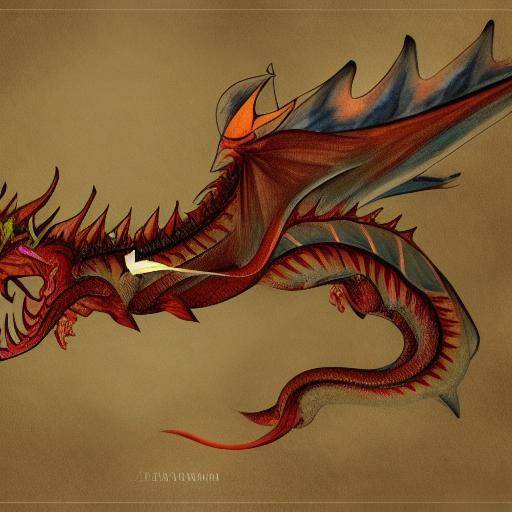
Philippine mythology is full of fascinating creatures and legends, and one of the most intriguing is that of the Bakunawa, a spectacular dragon that, according to the mythology of the archipelago, swallows the moon during the eclipses. This article explores the rich history of Bakunawa, its relationship with the lunar eclipses and its meaning for the Philippines, revealing details about this legendary figure that has captivated generations.
Introduction
Mythology is a reflection of the culture and beliefs of a people, and the myth of Bakunawa is an integral part of the rich Filipino heritage. On this occasion, we will explore in depth the history, symbolism and the importance of Bakunawa, as well as its connection to the lunar eclipses and their impact on the culture of the Philippines.
History and Background
The Bakunawa myth goes back to ancient times in the Philippines. According to legends, the Bakunawa is a gigantic sea dragon living in the depths of the ocean. It is said to have an insatiable appetite and that, from time to time, it ascends to the surface to devour the moon. This belief has led to rituals and practices aimed at driving away Bakunawa and preventing it from completely consummating the moon.
The myths and legends surrounding the Bakunawa have evolved over the centuries, merging with religious beliefs and local traditions. This mythical figure has become a symbol of mystery and fear, but also a representation of the power of nature and the connection between heaven and earth.
Detailed Analysis
The vision of Bakunawa as a moon devourer has generated great fascination both in the Philippines and abroad. Throughout history, the lunar eclipses have been interpreted as events of great significance, and the presence of Bakunawa in these stories has further enriched its meaning. As science has shed light on the phenomenon of eclipses, the persistence of beliefs in Bakunawa invites us to reflect on the complex interactions between science, tradition and spirituality.
Exhaustive examination
The history of Bakunawa and its relationship with lunar eclipses offers a fascinating study of cultural influences in the interpretation of natural phenomena. The Bakunawa myth has also transcended borders, inspiring works of art, literature and music that explore their impact on collective consciousness.
Comparative analysis
The connection between the Bakunawa, the lunar eclipses and the Philippines is a profound and multifaceted theme that deserves thorough exploration. Through a detailed comparison, it is possible to better understand the complexities and symbolic wealth that surrounds this mythical figure and its influence on Philippine culture.
Practical Tips and Accessible Recommendations
While Bakunawa is a figure of Philippine mythology, its relevance transcends geographical boundaries. Understanding its history and meaning can enrich our appreciation of cultural diversity and promote a more enriching intercultural dialogue.
Conclusions and FAQs
In short, the Bakunawa myth and its relationship with lunar eclipses represent a fascinating convergence between history, mythology and culture. By exploring these connections, we can appreciate the depth and wealth of the cultural heritage of the Philippines and its impact on global consciousness.
Frequently asked questions
- **What does Bakunawa mean in Filipino mythology?**Bakunawa is considered a powerful and fearful being, representing the balance between heaven and earth in the Philippine mythology.
- **How does Bakunawa relate to lunar eclipses?**According to legends, theBakunawa is believed to devour the moon during the lunar eclipses, which leads to the realization of rituals to chase it away.
- **What impact does the Bakunawa myth have on the culture of the Philippines?**The Bakunawa myth has influenced various artistic and cultural expressions in the Philippines, serving as a source of inspiration and a symbol of the connection between the Filipino people and their natural environment.
- **What is the connection between Bakunawa and the modern science of lunar eclipses?**Although modern science explains the lunar eclipses as the result of the alignment of the Earth, the Moon and the Sun, traditional beliefs related to Bakunawa still persist and have enriched the cultural understanding of these astronomical phenomena.
- **What are some of the popular Bakunawa representations in Philippine art and culture?**The Bakunawa has been a recurrent theme in various artistic forms, including dances, sculptures, paintings and folkloric stories.
- **Is the Bakunawa myth still relevant in contemporary Filipino society?**Although modern scientific understanding has shed light on lunar eclipses, the Bakunawa myth remains a significant part of the rich cultural heritage of the Philippines, kept alive through narrative, art, dance and traditional celebrations.
In conclusion, the Bakunawa and its relationship with the lunar eclipses represents a depth of cultural meaning rooted in the Philippine mythology. Its persistence over time demonstrates the importance of preserving and appreciating the stories that reflect the rich cultural diversity of the world.
